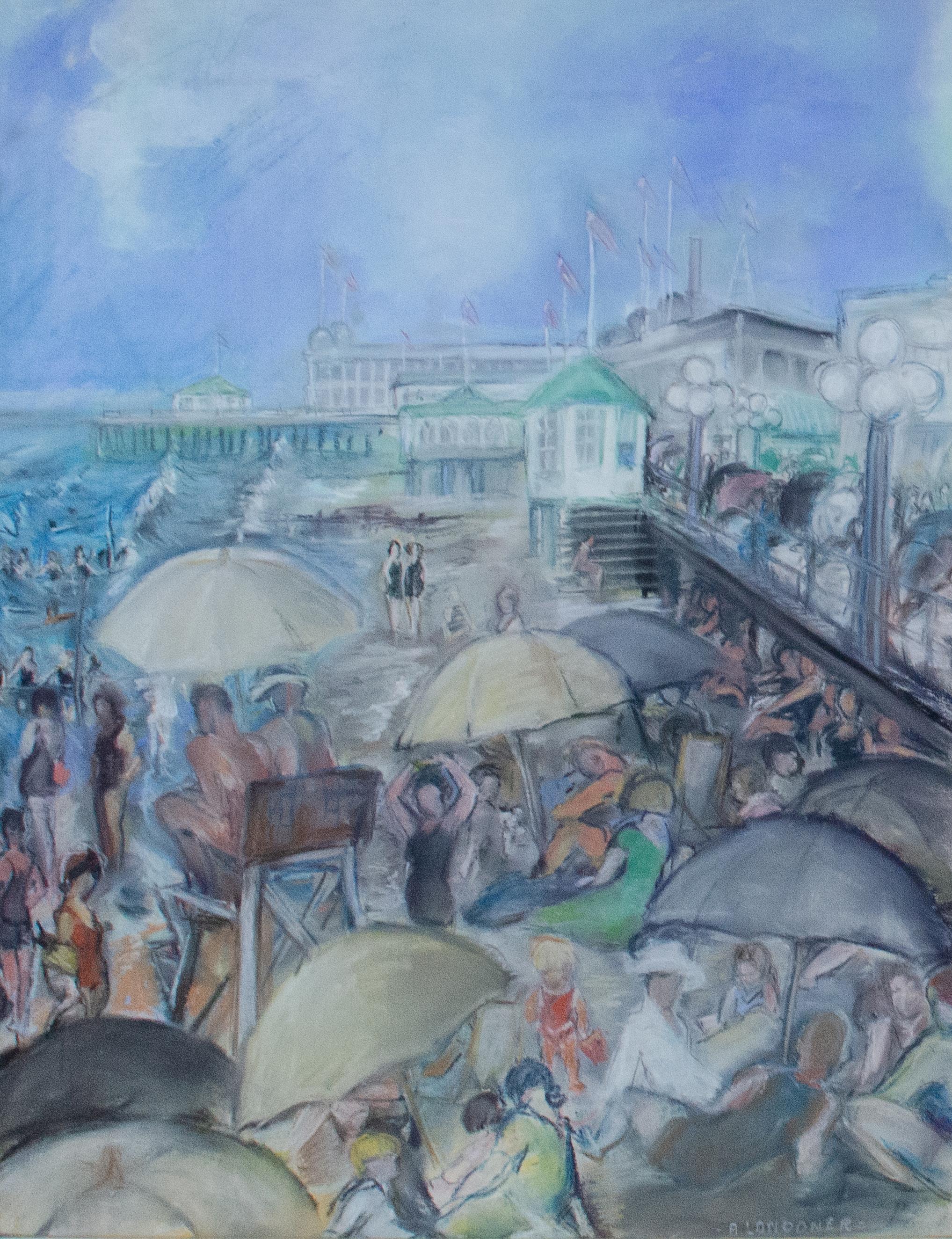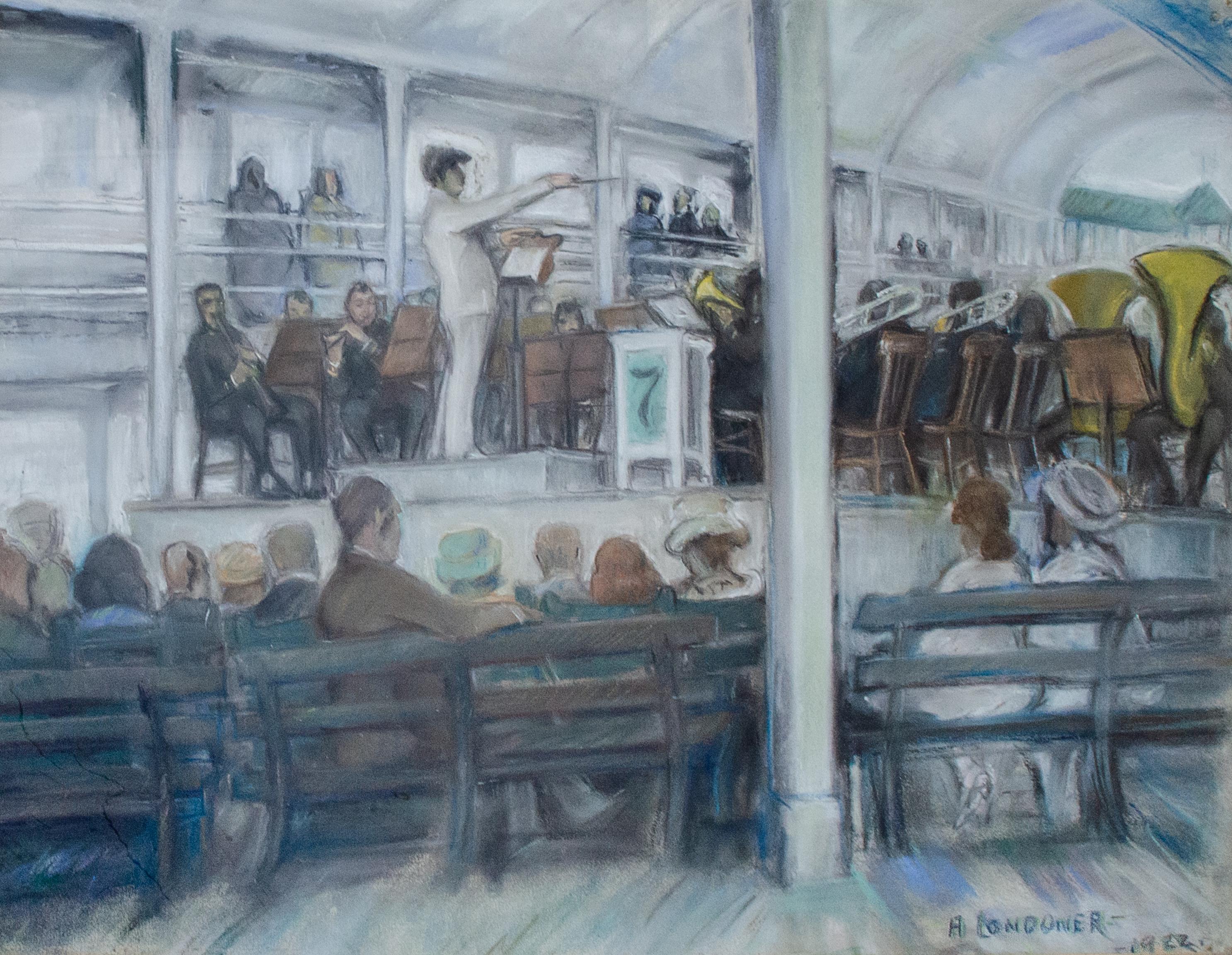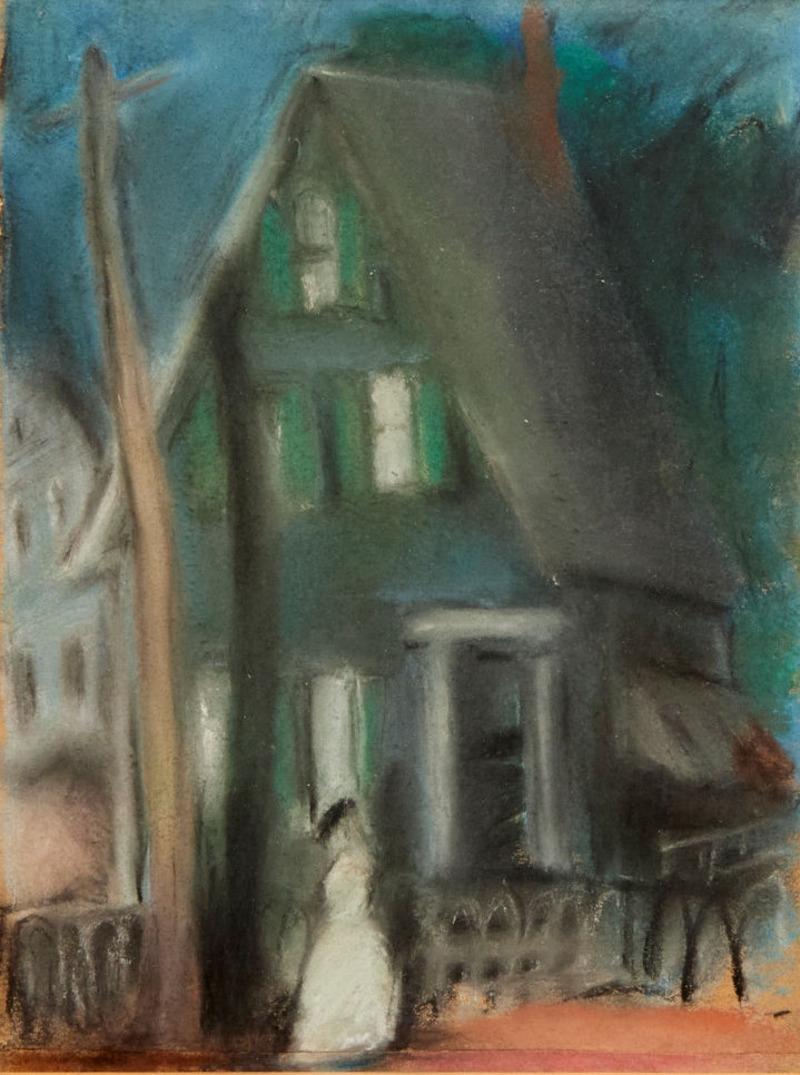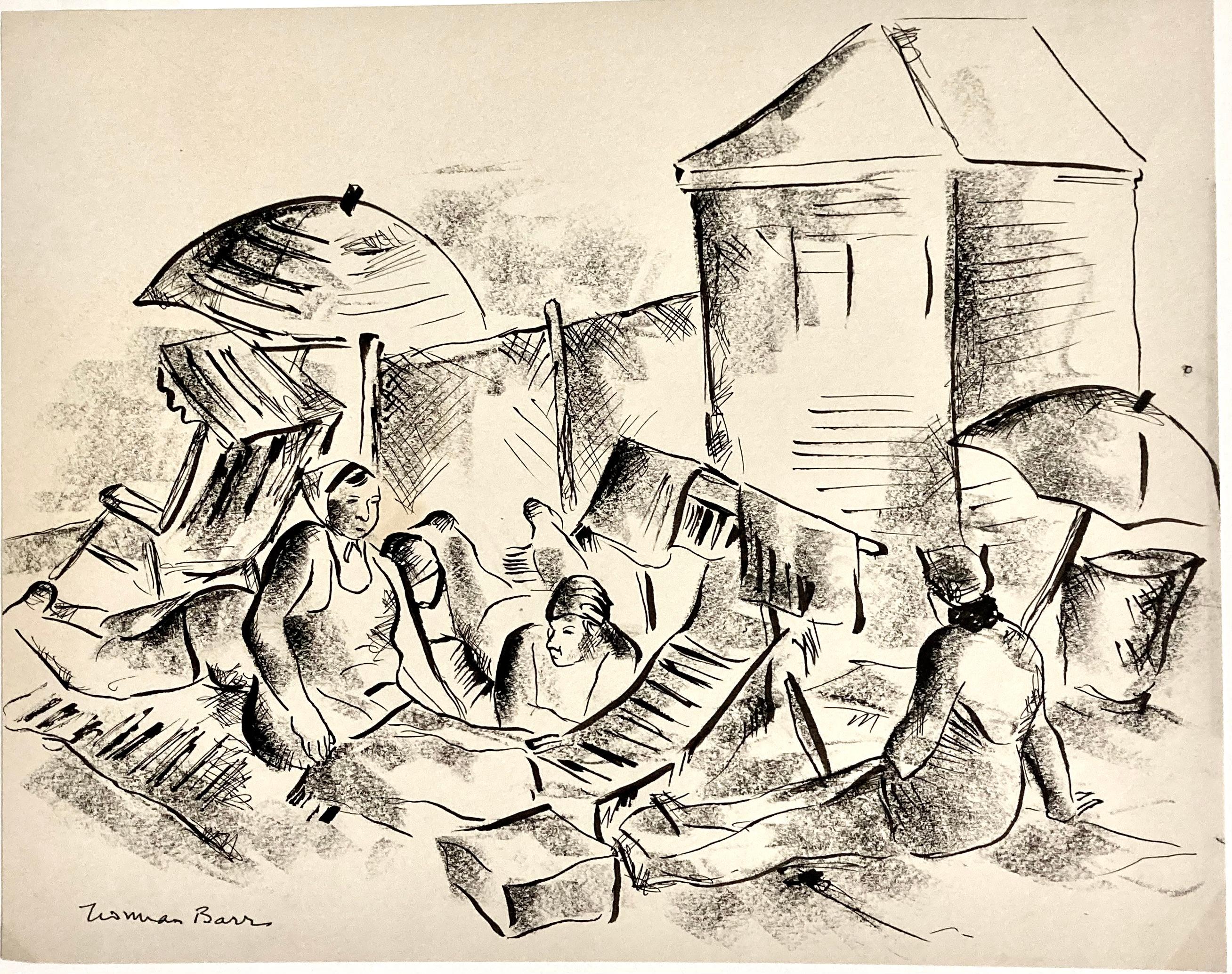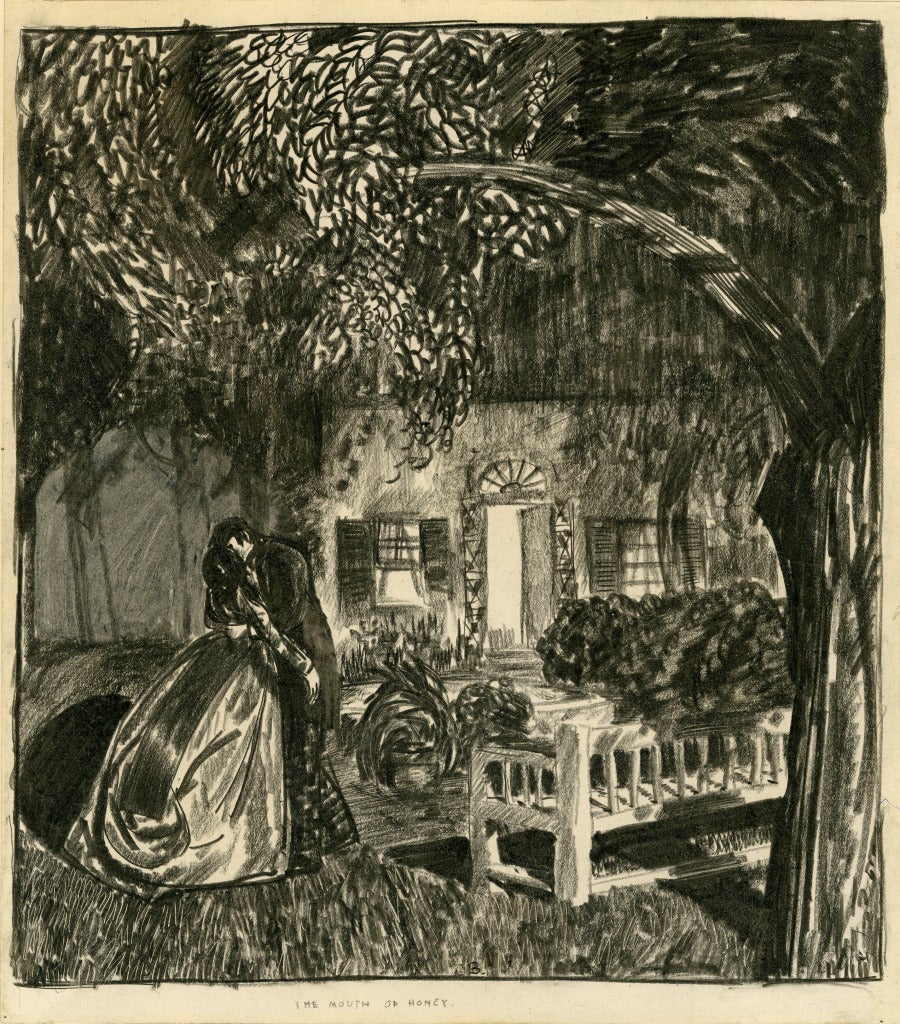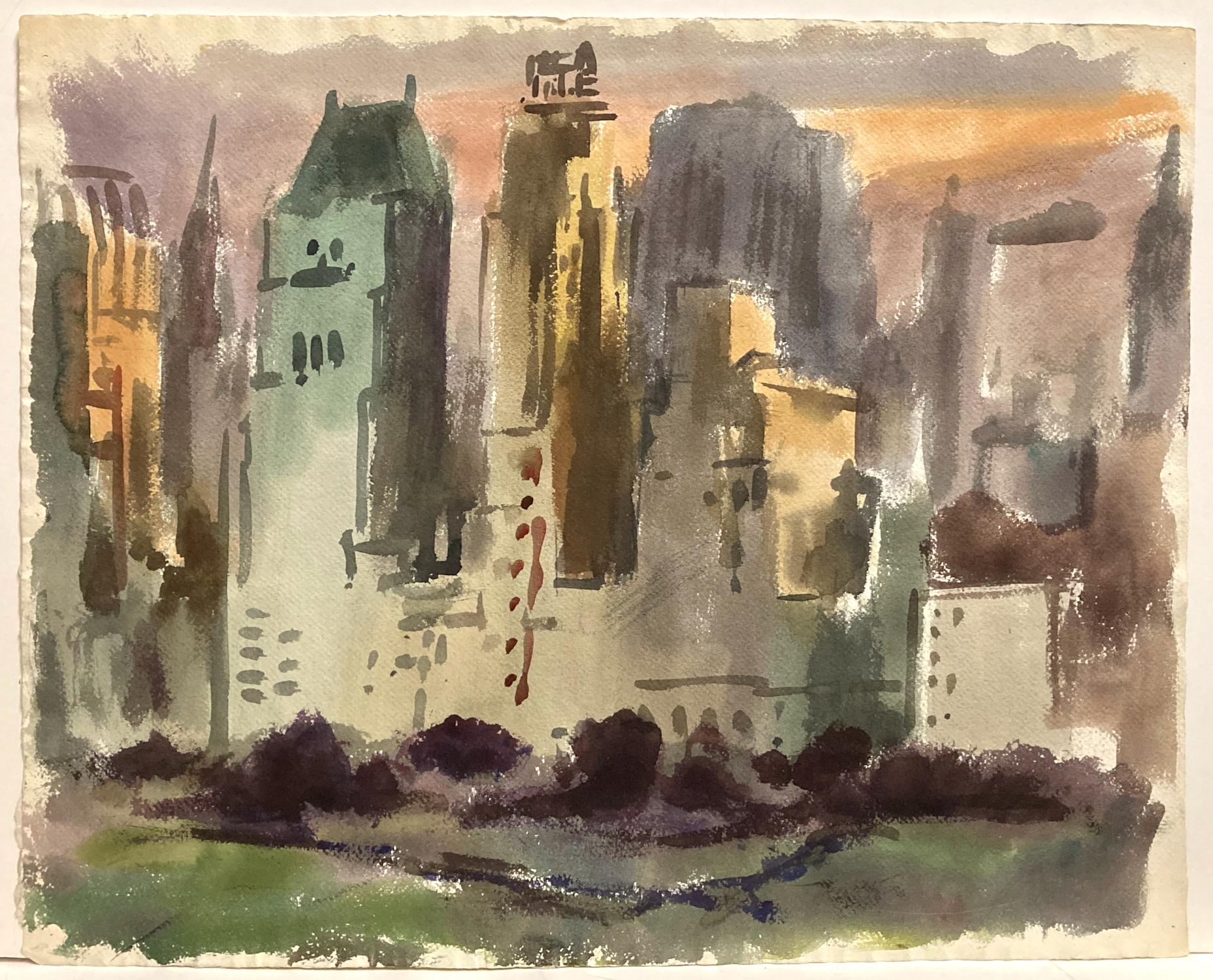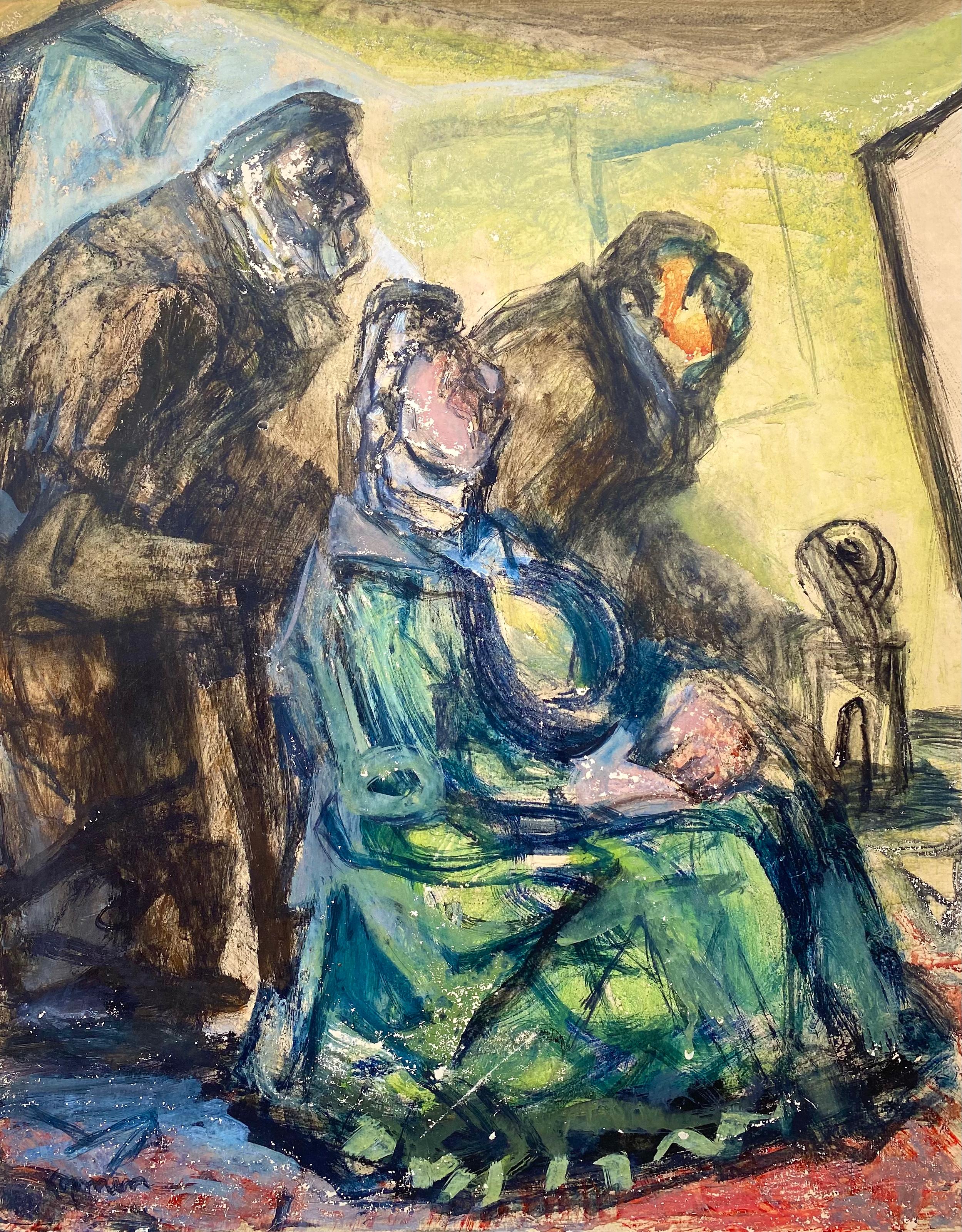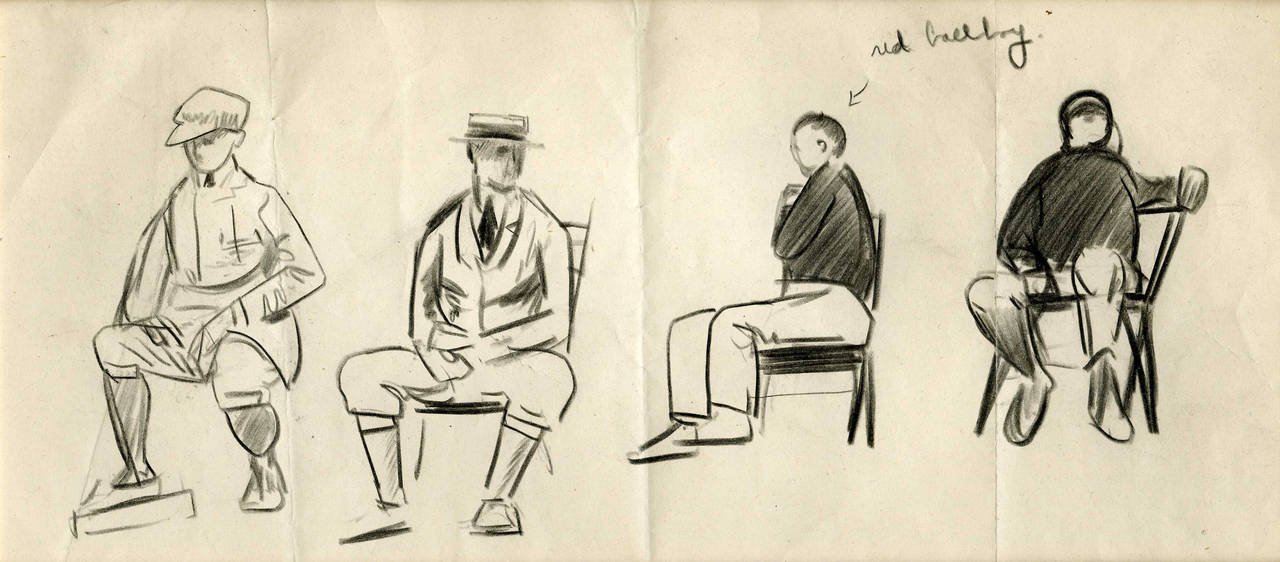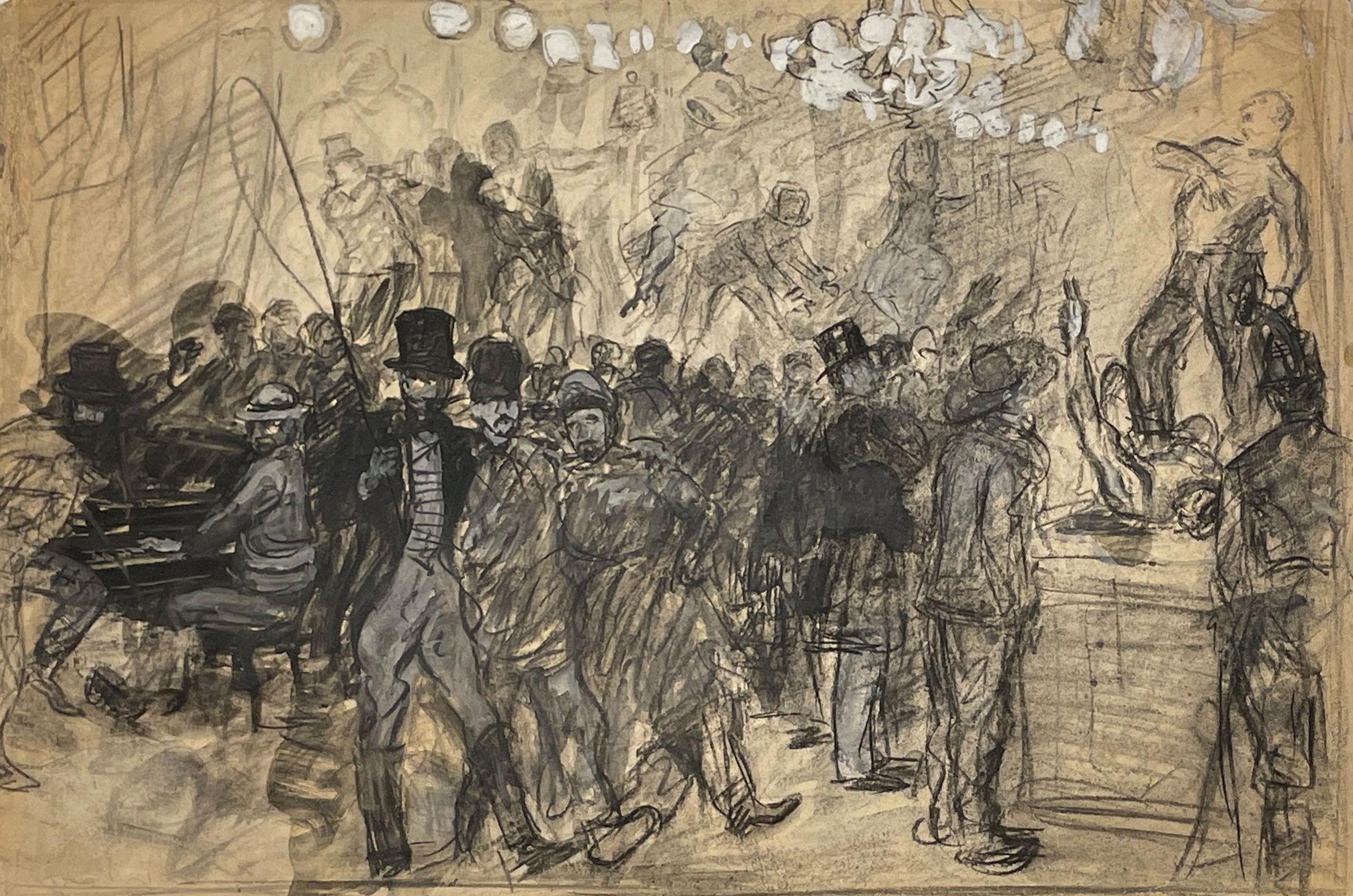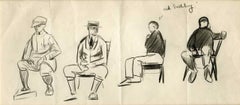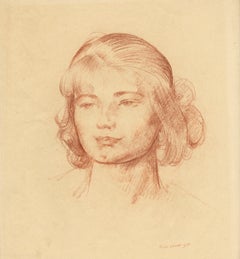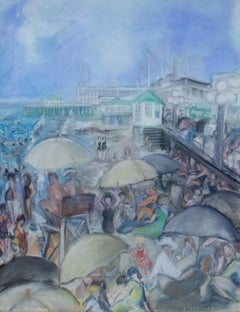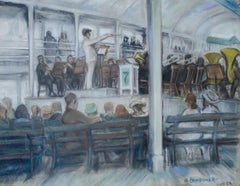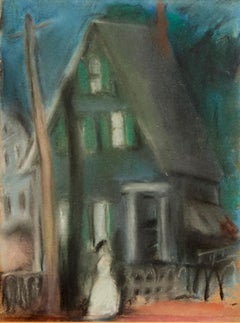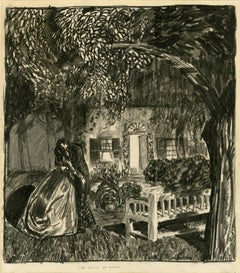
The Mouth of Honey
View Similar Items
Want more images or videos?
Request additional images or videos from the seller
1 of 11
George Wesley BellowsThe Mouth of Honey1922
1922
About the Item
- Creator:George Wesley Bellows (1882-1925, American)
- Creation Year:1922
- Dimensions:Height: 10.875 in (27.63 cm)Width: 9.625 in (24.45 cm)
- Medium:
- Movement & Style:
- Period:
- Condition:Mounted to support by the artist.
- Gallery Location:Fairlawn, OH
- Reference Number:Seller: FA78811stDibs: G131111140320
About the Seller
5.0
Recognized Seller
These prestigious sellers are industry leaders and represent the highest echelon for item quality and design.
Platinum Seller
These expertly vetted sellers are 1stDibs' most experienced sellers and are rated highest by our customers.
Established in 1978
1stDibs seller since 2013
711 sales on 1stDibs
Typical response time: 1 hour
Associations
International Fine Print Dealers Association
More From This SellerView All
- The Mouth of HoneyBy George Wesley BellowsLocated in Fairlawn, OHThe Mouth of Honey Lithographic crayon and mixed media on paper mounted to support paper Initialed by the artist "GB" bottom center on image. (see photo) Titled in pencil in bottom m...Category
1920s Ashcan School Drawings and Watercolor Paintings
MaterialsCrayon
- red ballboy or Studies for "Tennis Tournament"By George Wesley BellowsLocated in Fairlawn, OHred ballboy or Studies for "Tennis Tournament" Unsigned Provenance: Estate of the Artist, 1925 Emma S. Bellows (widow( Emma S. Bellows Trust Allison Galleries, New York Representing the Bellows Trust. Stock HVA 34 Hirschl & Adler Galleries, New York Thomas French Fine Art Ronald Slotter, Columbus, Ohio Columbus College of Art and Design, de-accessed 2010 Annotated by the artist:"red ballboy" Study sketches...Category
1910s Ashcan School Figurative Drawings and Watercolors
MaterialsGraphite
- Head of a Woman (Margaret)By Leon KrollLocated in Fairlawn, OHHead of a Woman (Margaret) conte on wove paper, 1925 Signed and dated lower right Annotated "Margaret" in ink verso A portrait of Margaret Cassidy Manship ( d. 2012), daughter in law...Category
1920s Ashcan School Figurative Drawings and Watercolors
MaterialsConté
- Double sided crayon drawing in colors: Study for "The Shoe" (recto)By Théophile Alexandre SteinlenLocated in Fairlawn, OHDouble sided crayon drawing: Front: Study for "The Shoe" Reverse: Studies of Figures Blue crayon, red and black crayons Image size: 19.25 x 15.375 inches Frame size: 30 x 25 1/2 inches Signed with the estate stamp, Lugt 2312b, recto and verso Annotated on verso in blue pencil: “On Demande des petites femmes...Category
1890s Art Nouveau Figurative Drawings and Watercolors
MaterialsCrayon
- Eileen LakeBy Adolf Arthur DehnLocated in Fairlawn, OHEileen Lake Crayon on paper, early1930's Initialed in pencil lower right (see photo) Titled and annotated verso "Eileen Lake, early 1930s girlfriend" Note: Eileen Hall Lake was an American poet and Adolf Dehn's girlfriend in the early 1930s. Provenance: Estate of the artist By descent Adolf Dehn, American Watercolorist and Printmaker, 1895-1968 Adolf Dehn was an artist who achieved extraordinary artistic heights, but in a very particular artistic sphere—not so much in oil painting as in watercolor and lithography. Long recognized as a master by serious print collectors, he is gradually gaining recognition as a notable and influential figure in the overall history of American art. In the 19th century, with the invention of the rotary press, which made possible enormous print runs, and the development of the popular, mass-market magazines, newspaper and magazine illustration developed into an artistic realm of its own, often surprisingly divorced from the world of museums and art exhibitions, and today remains surprisingly overlooked by most art historians. Dehn in many regards was an outgrowth of this world, although in an unusual way, since as a young man he produced most of his illustrative work not for popular magazines, such as The Saturday Evening Post, but rather for radical journals, such as The Masses or The Liberator, or artistic “little magazines” such as The Dial. This background established the foundation of his outlook, and led later to his unique and distinctive contribution to American graphic art. If there’s a distinctive quality to his work, it was his skill in introducing unusual tonal and textural effects into his work, particularly in printmaking but also in watercolor. Jackson Pollock seems to have been one of many notable artists who were influenced by his techniques. Early Years, 1895-1922 For an artist largely remembered for scenes of Vienna and Paris, Adolf Dehn’s background was a surprising one. Born in Waterville, Minnesota, on November 22, 1895, Dehn was the descendent of farmers who had emigrated from Germany and homesteaded in the region, initially in a one-room log cabin with a dirt floor. Adolf’s father, Arthur Clark Dehn, was a hunter and trapper who took pride that he had no boss but himself, and who had little use for art. Indeed, during Adolf’s boyhood the walls of his bedroom and the space under his bed were filled with the pelts of mink, muskrats and skunks that his father had killed, skinned and stretched on drying boards. It was Adolf’s mother, Emilie Haas Dehn, a faithful member of the German Lutheran Evangelical Church, who encouraged his interest in art, which became apparent early in childhood. Both parents were ardent socialists, and supporters of Eugene Debs. In many ways Dehn’s later artistic achievement was clearly a reaction against the grinding rural poverty of his childhood. After graduating from high school in 1914 at the age of 19—an age not unusual in farming communities at the time, where school attendance was often irregular—Dehn attended the Minneapolis School of Art from 1914 to 1917, whose character followed strongly reflected that of its director, Munich-trained Robert Kohler, an artistic conservative but a social radical. There Dehn joined a group of students who went on to nationally significant careers, including Wanda Gag (later author of best-selling children’s books); John Flanagan (a sculptor notable for his use of direct carving) Harry Gottlieb (a notable social realist and member of the Woodstock Art Colony), Elizabeth Olds (a printmaker and administrator for the WPA), Arnold Blanch (landscape, still-life and figure painter, and member of the Woodstock group), Lucille Lunquist, later Lucille Blanch (also a gifted painter and founder of the Woodstock art colony), and Johan Egilrud (who stayed in Minneapolis and became a journalist and poet). Adolf became particularly close to Wanda Gag (1893-1946), with whom he established an intense but platonic relationship. Two years older than he, Gag was the daughter of a Bohemian artist and decorator, Anton Gag, who had died in 1908. After her husband died, Wanda’s mother, Lizzi Gag, became a helpless invalid, so Wanda was entrusted with the task of raising and financially supporting her six younger siblings. This endowed her with toughness and an independent streak, but nonetheless, when she met Dehn, Wanda was Victorian and conventional in her artistic taste and social values. Dehn was more socially radical, and introduced her to radical ideas about politics and free love, as well as to socialist publications such as The Masses and The Appeal to Reason. Never very interested in oil painting, in Minneapolis Dehn focused on caricature and illustration--often of a humorous or politically radical character. In 1917 both Dehn and Wanda won scholarships to attend the Art Students League, and consequently, in the fall of that year both moved to New York. Dehn’s art education, however, ended in the summer of 1918, shortly after the United States entered World War I, when he was drafted to serve in the U. S. Army. Unwilling to fight, he applied for status as a conscientious objector, but was first imprisoned, then segregated in semi-imprisonment with other Pacifists, until the war ended. The abuse he suffered at this time may well explain his later withdrawal from taking political stands or making art of an overtly political nature. After his release from the army, Dehn returned to New York where he fell under the spell of the radical cartoonist Boardman Robinson and produced his first lithographs. He also finally consummated his sexual relationship with Wanda Gag. The Years in Europe: 1922-1929 In September of 1921, however, he abruptly departed for Europe, arriving in Paris and then moving on to Vienna. There in the winter of 1922 he fell in love with a Russian dancer, Mura Zipperovitch, ending his seven-year relationship with Wanda Gag. He and Mura were married in 1926. It was also in Vienna that he produced his first notable artistic work. Influenced by European artists such as Jules Pascin and Georg Grosz, Dehn began producing drawings of people in cafes, streets, and parks, which while mostly executed in his studio, were based on spontaneous life studies and have an expressive, sometimes almost childishly wandering quality of line. The mixture of sophistication and naiveté in these drawings was new to American audiences, as was the raciness of their subject matter, which often featured pleasure-seekers, prostitutes or scenes of sexual dalliance, presented with a strong element of caricature. Some of these drawings contain an element of social criticism, reminiscent of that found in the work of George Grosz, although Dehn’s work tended to focus on humorous commentary rather than savagely attacking his subjects or making a partisan political statement. Many Americans, including some who had originally been supporters of Dehn such as Boardman Robinson, were shocked by these European drawings, although George Grocz (who became a friend of the artist in this period) admired them, and recognized that Dehn could also bring a new vision to America subject matter. As he told Dehn: “You will do things in America which haven’t been done, which need to be done, which only you can do—as far at least as I know America.” A key factor in Dehn’s artistic evolution at this time was his association with Scofield Thayer...Category
1930s American Realist Figurative Drawings and Watercolors
MaterialsOil Crayon
- Deco WomanBy William SommerLocated in Fairlawn, OHDeco Woman Crayon on paper, c. 1920 Signed in ink lower left: "Wm. Sommer" (see photo) Provenance: Estate of the artist Edwin Sommer (the artist’s son) Jose...Category
1910s Art Deco Drawings and Watercolor Paintings
MaterialsCrayon
You May Also Like
- "Beach at Atlantic City, New Jersey" Amy Londoner, Ashcan School, FigurativeBy Amy LondonerLocated in New York, NYAmy Londoner Beach at Atlantic City, circa 1922 Signed lower right Pastel on paper Sight 23 x 18 inches Amy Londoner (April 12, 1875 – 1951) was an American painter who exhibited at...Category
1920s Ashcan School Figurative Paintings
MaterialsPastel, Paper
- "Musical Conductor" Amy Londoner, Ashcan School, Figurative Concert SceneBy Amy LondonerLocated in New York, NYAmy Londoner Musical Conductor, 1922 Signed and dated lower right Pastel on paper Sight 18 x 23 inches Amy Londoner (April 12, 1875 – 1951) was an American painter who exhibited at ...Category
1920s Ashcan School Figurative Paintings
MaterialsPastel, Paper
- "Night Stroll" Amy Londoner, Ashcan School, Figurative NocturneBy Amy LondonerLocated in New York, NYAmy Londoner Beach at Atlantic City, circa 1922 Signed lower right Pastel on paper Sight 23 x 18 inches Amy Londoner (April 12, 1875 – 1951) was an American painter who exhibited at...Category
1910s Ashcan School Figurative Paintings
MaterialsPastel, Paper
- Norman Barr, Coney Island (large), 1940By Norman BarrLocated in New York, NYNorman Barr recorded his beloved New York City from the Bronx, to Coney Island, to the Fulton Fish Market. In this period he was on the New Deal's Mural ...Category
Mid-20th Century Ashcan School Figurative Drawings and Watercolors
MaterialsIndia Ink, Crayon
- Norman Barr, Delancey Street (NYC)By Norman BarrLocated in New York, NYNorman Barr recorded his beloved New York City from the Bronx, to Coney Island, to the Fulton Fish Market. In this period he was on the New Deal's Mural ...Category
Mid-20th Century Ashcan School Figurative Drawings and Watercolors
MaterialsIndia Ink, Crayon
- Norman Barr, Farm, North Bronx (NYC)By Norman BarrLocated in New York, NYNorman Barr recorded his beloved New York City from the Bronx, to Coney Island, to the Fulton Fish Market. In this period he was on the New Deal's Mural ...Category
Mid-20th Century Ashcan School Animal Drawings and Watercolors
MaterialsIndia Ink, Crayon
Recently Viewed
View AllMore Ways To Browse
New England Watercolor
Antique Watercolor Portrait
Nude Painting Beige
Watercolor Of Room
Pink Watercolor
Antique Watercolours
Paper Used For Charcoal Drawing
California Watercolor School
Nude Figure Drawing
Antique Watercolor Portrait Paintings
Africa Watercolor
African Watercolor
Sketches In Ink
Framed Original Pencil Drawing
Chinese Ink Drawing
China Ink Drawings
Male Drawing
Pencils Used For Portrait Drawing
